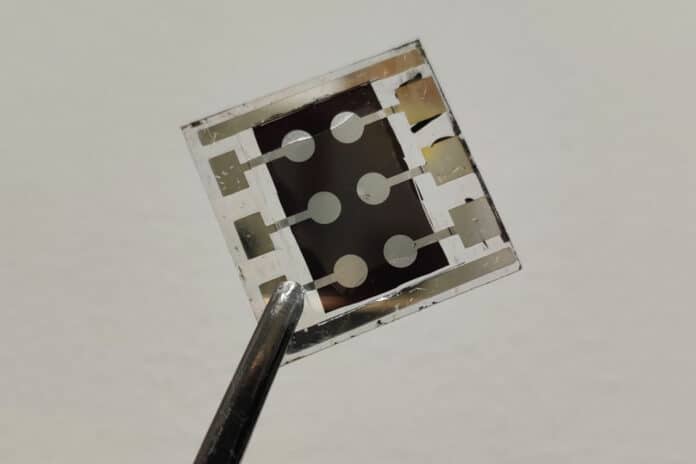Perovskite solar cells have emerged as a promising candidate for the next generation of photovoltaic devices due to their remarkable efficiency in converting sunlight into electricity. However, a major challenge that limits their commercial application is their thermal instability, meaning that they don’t tend to perform well when exposed to high temperatures.
To address his issue, researchers at the City University of Hong Kong (CityU) with an innovative solution.
The CityU team has focused on the self-assembled monolayer (SAM), an essential part of perovskite solar cells, and envisioned it as a heat-sensitive shield that needed reinforcement.
They have engineered a unique type of SAM and anchored it on a nickel oxide surface as a charge extraction layer that helps perovskite solar cells perform well in high temperatures.
“We discovered that high-temperature exposure can cause the chemical bonds within SAM molecules to fracture, negatively impacting device performance. So our solution was akin to adding a heat-resistant armor – a layer of nickel oxide nanoparticles, topped by a SAM, achieved through an integration of various experimental approaches and theoretical calculations,” said Professor Zhu Zonglong of the Department of Chemistry at CityU.
Anchoring the SAM onto an inherently stable nickel oxide surface enhances the SAM’s binding energy on the substrate. Researchers also synthesized a new SAM molecule of their own that promotes more efficient charge extraction in perovskite devices.
“Our approach has dramatically enhanced the thermal robustness of the cells,” said Professor Zhu in the press release. “By introducing a thermally robust charge extraction layer, our improved cells retain over 90% of their efficiency, boasting an impressive efficiency rate of 25.6%, even after operated under high temperatures, around (65℃) for over 1,000 hours. This is a milestone achievement.”
By improving the thermal stability of perovskite solar cells through the innovatively designed SAMs, the team has laid the foundation for these cells to perform efficiently even in high-temperature conditions.
